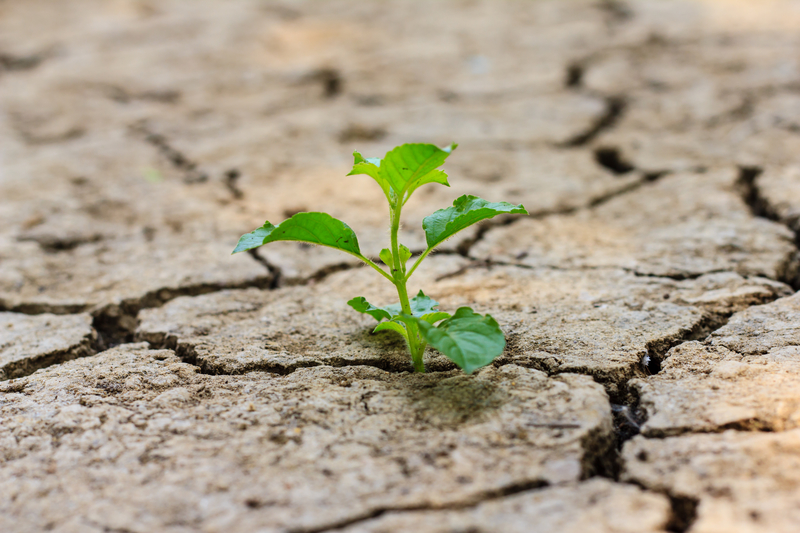These 5 tips will get you on the right track when planting a garden using dry soil. While there's not much you can do about the soil itself, you can use these things to make the soil a more habitable environment for your seeds.
1. Add organic matter when gardening on dry soil
Before planting in dry soil, it’s important to dig in a generous amount of organic matter. Compost works best and it’s highly recommended when creating an entire bed or overhauling one.
Compost breaks up dense dry soil such as clay and it provides good aeration. Another advantage of compost is adding bulk to dry sandy soils and it keeps plant nutrients from being washed away.
2. Select drought tolerant plants
In general, most drought resistant vegetables need short days to maturity.
Here is a list with the plants my family tried over the years:
- Sweet potato
- Swiss chard
- Jerusalem artichoke
- Iroquois cantaloupe
- Okra
- Peppers
- Cantaloupe
- Melon
- Squash
- Eggplants (miniature varieties)
- Moth bean
- Tepary bean
- Chickpea
- Black-eyed pea
- Lima bean (Jackson wonder)
- Corn (Black Aztec and Hopi Pink varieties)
There are other types of drought resistant vegetables and you need to research about the ones popular in your region.
3. Add mulch for moisture
This will help trap moisture, keep the roots of the plant cool and prevent weeds. It also allows you to walk around your beds with ease without stepping on plants.
Gravel works best for dry zones, but there are also those who add straw or chipped bark. The main advantage of gravel is that it won’t allow plants to rot since it doesn’t soak up moisture.
4. Plant properly
You need to pick young plants and stay away from mature shrubs, trees and perennials.
Is also crucial to plant at the correct time so make sure you sow the seeds earlier in the spring to jump start the growing season. Another thing to keep in mind is to plant later in the fall to minimize the use of irrigation and take advantage of seasonal rains.
The planting pattern is also important and you can plant in groupings or hexagonal offset patterns. This will help shade the ground and it will keep the soil cooler by preventing evaporation. When planting in groupings, companion planting is recommended.
5. Water properly and water well
As a rule of thumb, always water early or late in the day because moisture will evaporate quickly from the soil in midday heat. There are various irrigation systems that can help you do a proper job. Plants require long sporadic watering to encourage deep root growth.
Do you have any other tips for planting in dry soil?
Article Source: Prepper's Will

Brandon Franklin